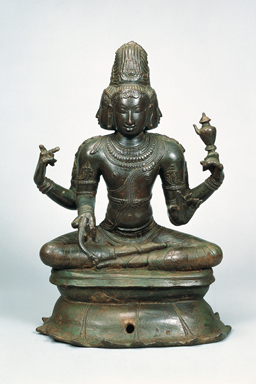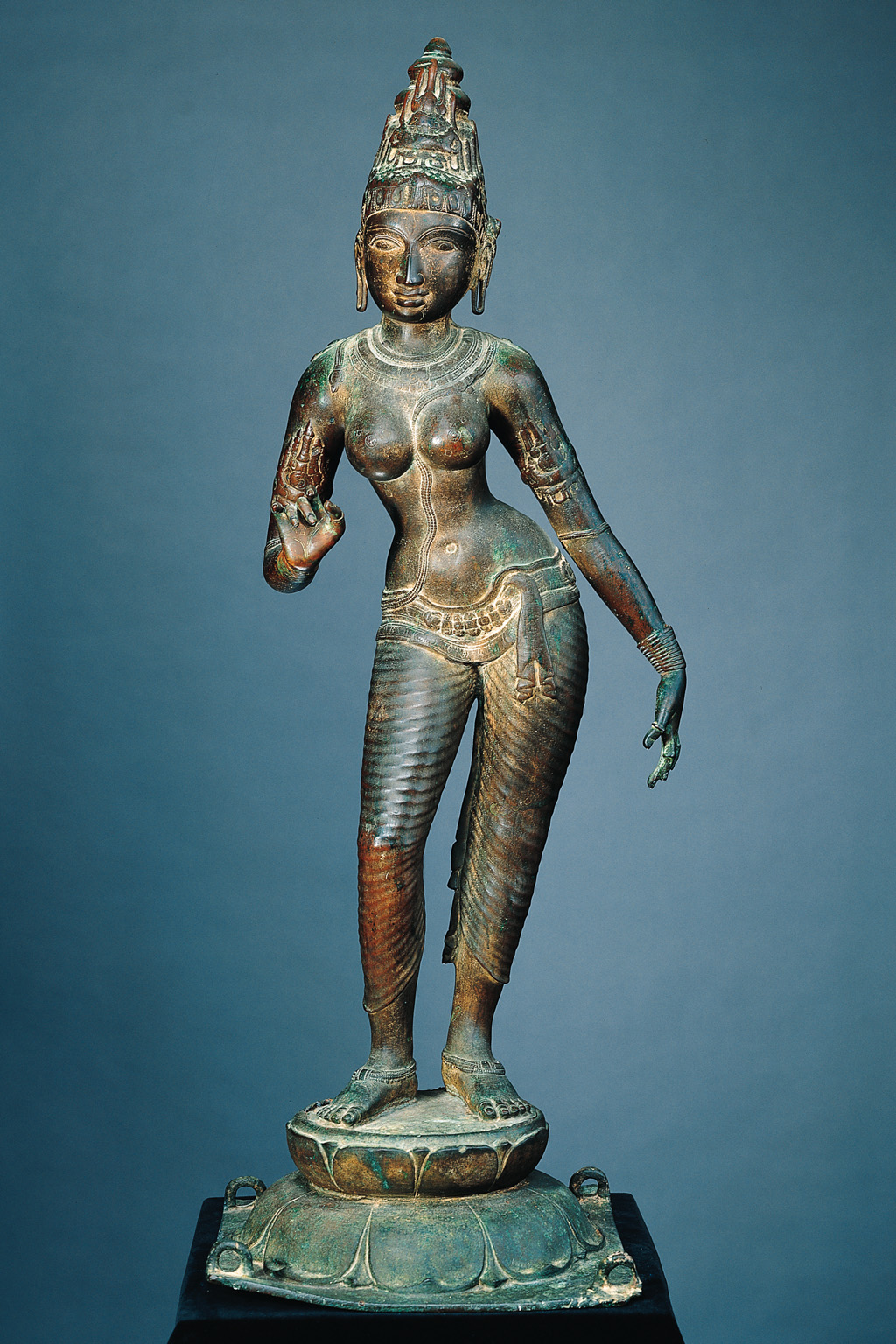Home / Puja: Worshiping the God
Puja: Worshiping the God
In Chola society, entry into sacred spaces of the temple compound was often dependent on social status. However, festival processions were open and accessible to all. On the extraordinary days of the great annual festivals, in a practice that continues today, the deities travel beyond the confines of the temple and circumambulate the streets among large crowds of worshipers. The power of this event is reflected in the worshipers, who receive the deities with gestures of respect—raising their hands in salutation as they call out praises to the deities. Sacred texts are chanted and temple priests bring plates of burning camphor (an organic compound derived from the camphor tree) into the crowds. Worshipers cup their hands over the camphor flame to receive the divine energy infused in the burning embers.
These highly sensory acts of worship, or puja, range from individual gestures to profound communal acts of religious emotion. Worshipers come to the festivals with their vows and petitions to seek spiritual and material blessings, or prasada, from the presiding deity. One of the most central rites of puja is darshana, which involves seeing and being seen by the deity. Darshana is a transaction between the deity and the worshiper, who seeks a direct and personal connection with the divine, through which grace, merit, and blessings are transferred. Because worshipers seek to place themselves under the deity’s gaze, the articulation of the eyes of bronze icons is of primary importance.
During the creation of a bronze icon, the incising of the eyes represents the awakening of the image. The eyes may become abraded over time, however, and they can be recut during consecration ceremonies. The eyes are often worn smooth by centuries of devotional worship, which includes bathing and anointing rites, or abhisheka. To perform abhisheka, the temple priest applies a series of auspicious substances—including ghee (clarified butter), milk, curds, honey, and an ash solution—to the surface of the bronze, which are followed by consecrated water and an application of sandalwood paste and turmeric. These procedures, which particularly activate the senses of touch and smell, are accompanied by the sounds of mantras, devotional hymns, and music, which gradually infuse the image with divine power. Once the anointing process is complete, the deity then undergoes a sacred dressing ceremony.
The incising of the eyebrows and eyes on the four faces of this sculpture displays varying degrees of recutting, suggesting that the sculpture underwent various consecration ceremonies over the centuries. This ritual act of recutting served to re-enliven the image following regular lustrations that would have gradually eroded the metal. The ritual ladle and manuscript held in the figure’s front hands and the water jar and rosary (partially missing) held in the rear hands indicate that this sculpture, seated in the yogasana posture on an inverted lotus base, portrays a youthful Brahma. While Chola images of Brahma are relatively rare, the figure formed part of the marriage group assemblage of Shiva and Uma.
During the Chola period, adoration of the physical beauty of the divine was an integral part of bhakti. This visualization in sculpture of Shiva’s consort Uma represents the outward grace and sensuality that were considered manifestations of inner spiritual beauty. This image of Uma stands in the tribhanga, or triple-bend, posture.The tribhanga posture emphasizes the sensual contours of Uma’s slim waist and full breasts and hips. Her gracefully raised hand once held a lotus or blue lily blossom (now missing).
Brahma
Chola period, 12th century
Copper alloy
H. 15 5/8 x W. 10 1/4 x D. 7 1/2 in. (39.7 x 26 x 24.8 cm)
Asia Society, New York: Mr. and Mrs. John D. Rockefeller 3rd Collection, 1979.25
EnlargeUma Parameshvari (Great Goddess Uma)
Chola period, early 11th century
Copper alloy
H. 31 1/2 x W. 10 3/4 x D. 10 3/4 in. (88.9 x 27.3 x 27.3 cm)
Asia Society, New York: Mr. and Mrs. John D. Rockefeller 3rd Collection, 1979.19
Enlarge



 Share
Share